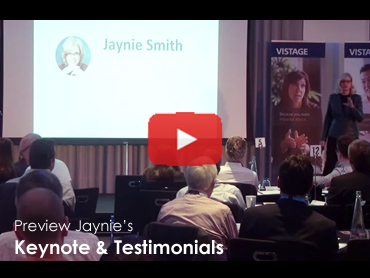Affluent Magazine: The Lost Discipline: It affects your sales and profitability daily
There is a very serious lost discipline in most companies today. Many have wandered away from concerning themselves with competitive advantage and its impact on their bottom line. Sales people are struggling to compete on anything but price. Some have simply lost touch with what is and what is not a competitive advantage.
Warren Buffet says “Powerful competitive advantages create a moat around a business such that it can keep competitors at bay and reap extraordinary growth and profits.” So why then do so few companies focus on it?
I have asked over 3,000 CEO’s and nearly as many salespeople, to state their number one competitive advantage. The results were astounding. Only a handful could state their company’s differentiator. Here is what I have found:
- They don’t have a competitive advantage.
Jack Welch said “if you don’t have a competitive advantage, don’t compete. There are thousand s of companies who have painted themselves into a commodity corner. They allow price to be the “deadly” tiebreaker. It is deadly because these companies will often be racing their competition to the bottom of the margin ladder. When they have a clear competitive advantage, price is much less of an issue and sales close rates increase substantially. - They mistake “strengths” for competitive advantages.
I have acquired a “ten most common response list” that CEO’s, Executives and Sales and Marketing professionals will often tout replies like: good quality, reputation, knowledgeable, employees, responsiveness, great customer service, flexible, innovative and trust.
These are simply strengths. They are generally putting you at parity with your competition. These words are subjective and have lost the power of their meaning from hackneyed usage. Your definition of “quality” and mine are likely light years apart.
JTech, a Florida manufacturer of restaurant “table ready” beepers held competition at bay by touting “Of the 50 major restaurant chains in America, 100% use JTech pagers.” - They don’t use metrics to support their competitive advantages. You can often turn the subjective claims into meaningful competitive advantages with use of company metrics. For example, instead of saying “good quality,” you might boast “less than ½ of one percent returns”
- They don’t consistently communicate their competitive advantages. My company has done scores of in-house competitive advantage drill downs. We will ask 25 employees in one room, what is your company’s number one competitive advantage? Guess how many different answers we get? About 25. What does this suggest? Try that at your company.
If you don’t internally agree on your competitive advantages, how can the market place know what it is and what you are known for? Once you identify your competitive advantages they must be communicated internally and externally, loud, clear and often. - The Voice of the Customer is often ignored. Large companies spend big bucks on customer market research but often fail to heed its findings for any number of reasons (fear of change, internal bureaucracy, lack of resources, etc). On the other hand, mid market companies don’t invest in it at all. (my research shows only bout 10% of mid market companies invest in customer market research.) They say “we know our customers well so we don’t need it, and they don’t understand the ROI. It is only through solid, frequent “outside” market research can a company learn the hierarchy of their customers buying criteria and hence, know which competitive advantages matter.
It’s a veritable battlefield out there. We have to be much more disciplined about where we stand in the competitive marketplace. Competitive Advantages don’t fall out of the sky. They require operational decisions and strategic planning. Sales people absolutely must be armed with meaningful, quantifiable competitive advantages that build confidence in the buying decision. When one builds confidence in the buying decision and removes risk for the customer, they will minimize price as an issue and close more sales. Creating Competitive Advantage (Doubleday 2006) explores many companies who have done so successfully by getting loud and clear on their competitive advantages. What are you waiting for?
*Written by Jaynie L. Smith, published in Affluent Magazine – June 2007
About Jaynie L. Smith and Smart Advantage, Inc.
Smart Advantage, Inc. is a consultancy founded by Jaynie L. Smith, author of the best-selling business bookCreating Competitive Advantage (Doubleday, 2006). Jaynie L. Smith has been a featured guest on ABC World News This Morning, Bloomberg News, and MSNBC discussing the Smart Advantage Process.
Based on more than 20 years experience with Fortune 500 companies and over 35,000 hours of CEO coaching, Jaynie L. Smith outlines a process for companies to understand, uncover, define, research, and edit their competitive advantages. Smart Advantage has refined, expanded, and licensed this process and consults with companies from Fortune 500 to mid-size and small firms.
